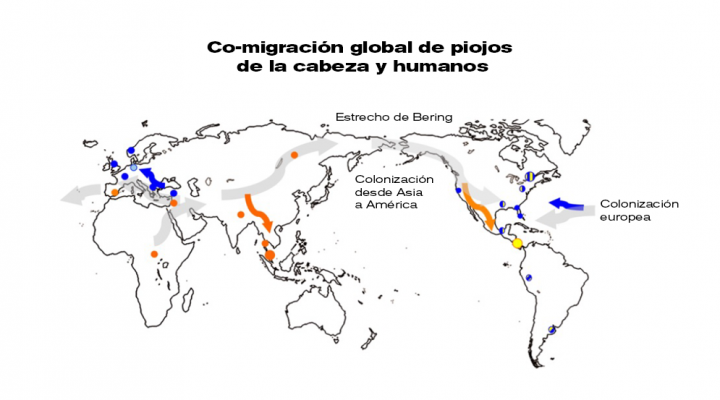BIOLOGICAL AND HEALTH SCIENCES
Insect genetic study reveals human migration around the world
CONICET researcher participated in an international study that analyzed 274 lice isolated in 19 countries.
Head lice have coexisted with humans and their ancestors for at least two million years, so the study of their genetic variation in different regions can provide information on population movements throughout history. This was confirmed by an international study in which a CONICET scientist participated. The finding was recently published in the scientific journal PLOs ONE.
The research team performed genetic analyzes on 274 human lice from 25 geographic sites in 19 countries such as Nepal, Thailand, Cambodia, Croatia, Holland, Spain, the United States, Honduras, Mexico, Peru, Argentina and others. In turn, this information was crossed with archaeological and biological data related to human migratory events, the life cycle of lice, their differential levels of parasitism and other variables to simulate statistically probable scenarios.
“The genetic information of the lice analyzed and other variables shows the presence of two different migratory waves in the colonization of America. One coming from East Asia related to the arrival of the first colonizers who crossed the Bering Strait approximately 16 thousand years ago and another wave coming from the arrival of Europeans in more recent times. Of course, these migratory waves were known, but in this work we verified that the genes of lice record the history of the global travels of their ‘hosts,'” says Ariel Toloza, a CONICET researcher at the Centro de Investigaciones en Plagas e Insecticidas (CIPEIN, CONICET-UNIDEF).
More findings from the international study
The study also revealed the presence of two very different groups of lice that did not mix and had different origins. Group I was found in lice from all over the world while group II was found only in lice from America and Europe. “The only lice that shared an ancestor with both groups were those that belonged to America, suggesting that they were the result of crossings between lice descended from the populations that crossed the Bering Strait and those descended from Europeans,” Toloza points out. And he continues: “This would be reflecting the movements of the settlers who arrived in America from Asia and the Europeans who arrived on the continent after the arrival of Christopher Columbus.”
Just as the lice collected in Central America had an association with the first settlers who arrived from Asia, “those isolated in South America were more genetically similar to the lice from Europe,” adds Toloza.
Likewise, there is previous work on mummies, discovered in Peru and Chile, which confirms that since the pre-Columbian era, in South America, lice whose genetics come from Asia and that were brought by human populations that crossed the Bering Strait also circulate. .
The CONICET researcher highlights that head lice “can be very useful to learn more about our history. This is because being closely associated with humans, they have in their genes information related to the movements made by our ancestors on the different continents.”
On the other hand, Toloza concludes that the recent study, in addition to providing new evolutionary knowledge about lice and their coevolution with human populations, “provides a model that could guide the development of new coevolutionary analyzes in other host-parasite systems.”
The first author of the study is Marina Ascunce, an Argentine researcher at the University of Florida in the United States, the director of the work is David Reed, from the Florida Museum of Natural History, and Angélica González-Oliver, from the National Autonomous University of Mexico
References:
Ascunce, M. S., Toloza, A. C., González-Oliver, A., & Reed, D. L. (2023). Nuclear genetic diversity of head lice sheds light on human dispersal around the world. PLOsOne
